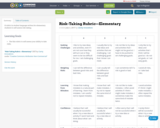
A rubric in student language written for elementary students to self-assess risk-taking.
- Subject:
- Life Science
- Mathematics
- Physical Science
- Social Science
- Material Type:
- Assessment
- Date Added:
- 07/03/2017

A rubric in student language written for elementary students to self-assess risk-taking.

This collection uses primary sources to explore the early history of Rock and Roll music. Digital Public Library of America Primary Source Sets are designed to help students develop their critical thinking skills and draw diverse material from libraries, archives, and museums across the United States. Each set includes an overview, ten to fifteen primary sources, links to related resources, and a teaching guide. These sets were created and reviewed by the teachers on the DPLA's Education Advisory Committee.

Reflection is metacognitive process that creates a greater understanding of ourselves and the situation we are in to inform future actions by this understanding. There is increasing literature on educational approaches for those in undergraduate or postgraduate studies and those continuing medical education to facilitate reflection. This resource adds to the reflective journal exercise presented previously, by providing a description of reflection, its use and reflection frameworks as well as the way it impacts positively learning outcomes in various educational settings including medical education. Lastly, an example of a reflection exercise for medical education is also added.
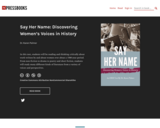
In this text, students will be reading and thinking critically about work written by and about women over about a 1500 year period. From non-fiction to drama to poetry and short fiction, students will study many different kinds of literature from a variety of voices and perspectives.
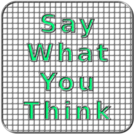
Language study can be divided into four parts: reading, speaking, listening, and writing. Where reasonable, we try to make use of and develop all four of these skills. Through practice, students can become well rounded and increasingly proficient at expressing themselves in English and more generally in their lives. In this book, we focus on critical thinking and clean writing.The last four chapters are a short introduction to philosophy, and they can be a significant leap in difficulty compared with prior chapters.
This book is designed as an English for Academic Purposes class for ESL high school students living in Japan, with a focus on critical thinking and writing. However, there's nothing specific about Japan in the book, and it could be used in other countries just as easily.
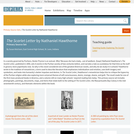
This collection uses primary sources to explore The Scarlet Letter by Nathaniel Hawthorne. Digital Public Library of America Primary Source Sets are designed to help students develop their critical thinking skills and draw diverse material from libraries, archives, and museums across the United States. Each set includes an overview, ten to fifteen primary sources, links to related resources, and a teaching guide. These sets were created and reviewed by the teachers on the DPLA's Education Advisory Committee.
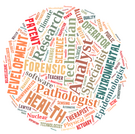
Science Career Exploration

The students will explore, research, and become more knowledgeable in various careers in science. Students will apply this knowledge by creating a lab, hands-on activity, visual, or video. Opportunity for student choice is provided and creativity to apply their understanding is given.
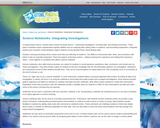
This article reviews the book "Using Science Notebooks in Elementary Classrooms" by Michael Klentschy and provides basic information about the role of notebooks in instruction and assessment.
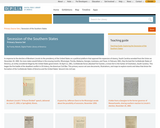
This collection uses primary sources to explore the secession of southern states from the US Government prior to the Civil War. Digital Public Library of America Primary Source Sets are designed to help students develop their critical thinking skills and draw diverse material from libraries, archives, and museums across the United States. Each set includes an overview, ten to fifteen primary sources, links to related resources, and a teaching guide. These sets were created and reviewed by the teachers on the DPLA's Education Advisory Committee.
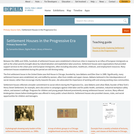
This collection uses primary sources to explore settlement houses during the Progressive Era. Digital Public Library of America Primary Source Sets are designed to help students develop their critical thinking skills and draw diverse material from libraries, archives, and museums across the United States. Each set includes an overview, ten to fifteen primary sources, links to related resources, and a teaching guide. These sets were created and reviewed by the teachers on the DPLA's Education Advisory Committee.
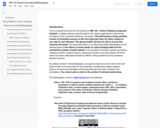
This is a shared document for the students in WR 122 - Critical Thinking & Argument Analysis: a college writing course focused on the various approaches to discerning concepts of truth, academic authority, and justice. This will become a living, growing archive of annotated sources on this very important topic for future classes to use, add to, and reference. The general public will also be able to access this research document. The document is a working annotated bibliography on the diverse theme of the effects of social media on critical thinking skills and the substantive analysis of public debate. It is compiled of scholarly, popular, and online magazine articles, research reports, audiovisual content, and news articles. All of the items have been collected/annotated by MHCC writing students and the professor, Andrew Gurevich.
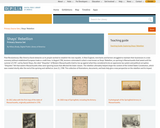
This collection uses primary sources to explore Shays' Rebellion. Digital Public Library of America Primary Source Sets are designed to help students develop their critical thinking skills and draw diverse material from libraries, archives, and museums across the United States. Each set includes an overview, ten to fifteen primary sources, links to related resources, and a teaching guide. These sets were created and reviewed by the teachers on the DPLA's Education Advisory Committee.
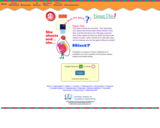
Your basketball team is down by one point! Your teammate, who makes free throws about three-fourths of the time, is at the free-throw line. She gets a second shot if she makes the first one. Each free throw she makes is worth one point. If there is no time left, what are the chances you win the game without overtime?
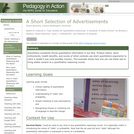
Advertisers constantly thrust quantitative information in our face. Product claims, store enticements, health benefits, and scores of other contexts use short quantitative arguments to catch a reader's eye (and possibly money). This example shows how one can use these ads to bring added content to a quantitative reasoning course.
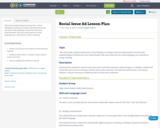
This lesson helps students develop their critical thinking on reading social issue advertisements and also their understanding of characteristics of an advertisement. Also how verbal and non-verbal languages are connected to convey meaning.
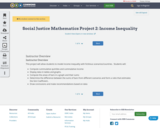
Instructor OverviewThis project will allow students to model income inequality with fictitious scenarios/countries. Students will:Compute cummulative quintiles and cummalative incomeDisplay data in tables and graphs.Compute the areas of bars in a graph and their sumsDetermine the difference between the sums of bars from different scenarios and form a ratio that estimates the Gini Coefficient..Draw conclusions and make recommendations based on data

This collection uses primary sources to explore social realism in American art. Digital Public Library of America Primary Source Sets are designed to help students develop their critical thinking skills and draw diverse material from libraries, archives, and museums across the United States. Each set includes an overview, ten to fifteen primary sources, links to related resources, and a teaching guide. These sets were created and reviewed by the teachers on the DPLA's Education Advisory Committee.

In this project students will research and then build a basic solar cooker shell made out of cardboard. Then they will run a variety of materials through experiments. Data from the experiments will be used to determine which materials should be added to the solar cooker shell to improve its ability to heat up food.
This project was created as a collaboration between a science and an engineering/woodshop class. The engineering class researched and build the basic solar cooker cardboard shells. The science class tested additional materials to add to the shells to improve the solar cookers. Then the engineering class, following the directions from reports created by the science class, added the materials to the solar cooker shells to create the final products.

With educators from around the world and faculty from MIT and Stanford University, you will learn quick and effective practices for evaluating online information that you can bring back to your classroom. The Stanford History Education Group has distilled these practices from observations with professional fact-checkers from the nation’s most prestigious media outlets from across the political spectrum. Using a combination of readings, classroom practice lessons, and assignments, you will learn how to teach the critical thinking skills needed for making wise judgments about web sources.
At the end of the course, you will be better able to help students find reliable sources at a time when we need it most.
This course is part of the Open Learning Library, which is free to use. You have the option to sign up and enroll in the course if you want to track your progress, or you can view and use all the materials without enrolling.